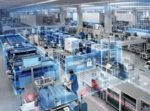Robotics tutor creates real time map of PPE demand
As part of his volunteer work for ShieldsUp, an organisation established at the start of lockdown which called on volunteers to 3D print personal protective equipment (PPE) to fill the shortage gap, WelTec tutor Frank Beinersdorf has developed a real time map of how many, and where, protective shields are needed across New Zealand. Frank’s map is what Shieldsup uses to determine how many shields need to be made, and provides information to the many volunteers tasked with delivering the equipment. Using various icons, the map displays priority of orders, what orders are ready to go, or are on the way, and a heat map of what is still needed. There is also a visual chart to demonstrate demand over time and a chart tracking Covid cases in New Zealand. The map and information can be found here: https://beinerf.github.io/. “Frank’s work became invaluable as we grew beyond lists and text,” says Tim Carr, ShieldsUp founder. “What he did in regard to visualising a rapidly growing data set has allowed us to see where resources were needed and demand was growing.” ShieldsUp is a community driven initiative, conceived from the outcry of medical and emergency responders facing COVID-19 head on, as they put their own health at risk in their jobs to help protect others, often without the personal protective equipment they so desperately needed. As well as providing information on numbers and location of PPE required, Frank has also converted the data into useful quick facts, kept up to date real time. For example, on Tuesday May 5th, over 18, 000 shields were still needed, 22 242 were wanted and 16, 521 had been made and delivered by 254 volunteers across New Zealand. In the spirit of community from which ShieldsUp was created, Frank included fun facts in his data […]










